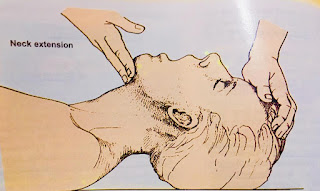ATLS for Fourth Year DPT
“The pathetic treatment that was offered to my children in the tertiary care centre was much worse than that I could offer them in the desert”,Said Dr. James Styners after the death of his three children.They all were dead due to offhand treatment methods in Nebraska.
Advanced Trauma Life Support (ATLS) has its origin in United states in 1976 by Dr James Satire after losing all his family in a light aircraft crash.He was so outraged by the slipshod post traumatic treatment of his family that the efforts of this conscientious man changed the face of trauma care throughout the world.
- These set of protocols were taken up by American college of surgeons,modified and published as ATLS in 1980.
- It is intended to allow a single doctor in Basic Health Unit to effectively assess and manage multiple traumas.The ideas and techniques of ATLS are spread worldwide and many courses are run regularly in many Hospitals and health institutions for the management of injured patients.
- The program has been adopted worldwide in over 60 countries,sometimes under the name of Early Management of Severe Trauma.In general all physicians,surgeons,nurses,paramedics and other advances practitioners should be trained in ATLS.
Steps in ATLS PHILOSOPHY
1-Primary Survey with simultaneous resuscitation
2-Secondary Survey
3-Definitive care
2-Secondary Survey
3-Definitive care
Primary Survey
1. The very first step of identification and assessment of patient presenting with trauma is called the primary Survey.Treatment plan follows an ABCDE sequence in every injured patient and simultaneously resuscitation is begun.
A:Airway Management with Cervical Spine Control
If the patient is conscious and able to answer your call this means airways are likely to be clear.If the patent is unconscious and unable to reply,Gloves are worn and two fingers sweep is used to clear solid material from the mouth and Pharynx combined with good suction under direct vision to remove fluid and debris.
Airway can be opened using a chin lift or Jaw Thirst. Incase of obstruction,pass an endotracheal tube.
If the injury is above the level of clavicle(collar bone),clavicle spine injustice should be suspected and cervical spine should be immobilized by Cervical Collar.
B:Breathing and Ventilation
Neck and chest should be exposed and examined properly by palpation,percussion,inspection and auscultation of the chest.The aim is to identify and manage six life-threatening thoracic conditions as Airway Obstruction, Tension Pneumothorax, Massive Haemothorax, Open Pneumothorax, Flail chest segment with Pulmonary Contusion and Cardiac Tamponade.
C:Circulation and Hemorrhage Control
Hemorrhage is a leading cause of death after trauma. Assessment of Blood Volume and cardiac output is done to identify the internal and external blood loss.
D:Dysfunction of CNS/Neurological Assessment
The Glasgow Coma Scale is a quick method to determine the level of consciousness.It can be done by AVPU method.
A:Alertness
V:Response to Voice
P:Response to Pain
U:Unresponsiveness
E:Expose the patient properly to examine all the injuries.Hypothermia should be addressed properly (it is the KILLER in trauma victims)
Secondary Survey
1. Head to toe examination:
(Examine head and face,spine and neck,Thorax,Abdomen,pelvis,extremities,back)
(Examine head and face,spine and neck,Thorax,Abdomen,pelvis,extremities,back)
2. Detailed history
3. Investigations like Xray,DPL,CT or MRI
4. Drug Administration (eg Tetanus prophylaxis)
Definitive Care Plan
Patient should be admitted to the concerned ward.
Patient with multiple injuries may require attention of a number of specialists.




